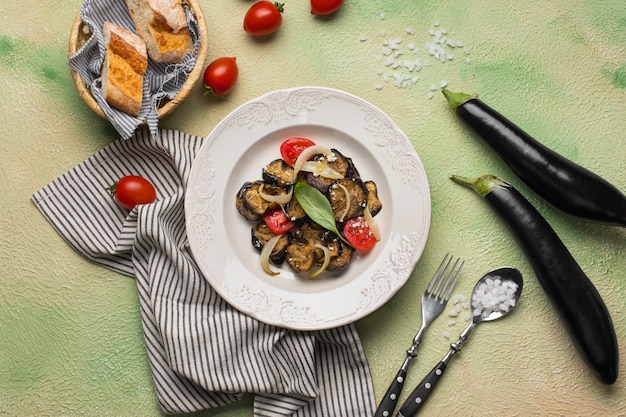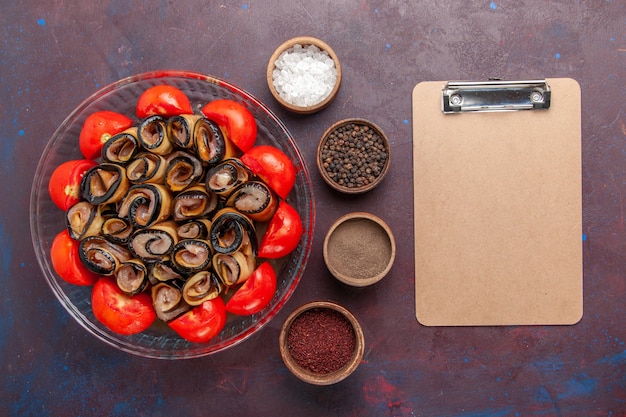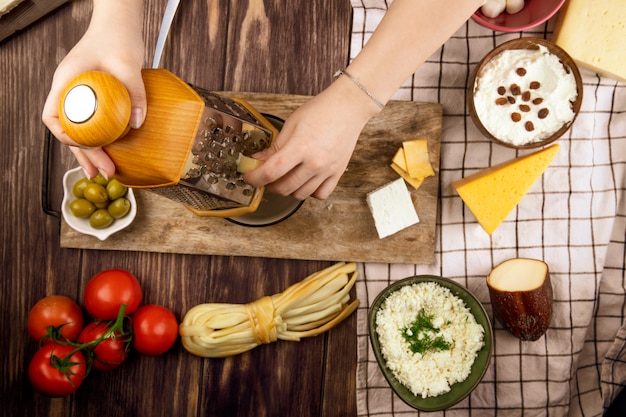(Part 1) Getting to Know Portobello Mushrooms

Portobello 101: All You Need to Know
First things first, let's delve into what makes portobello mushrooms so special. They're essentially the grown-up version of your average cremini or baby bella mushroom. As they mature, their caps become larger and meatier, perfect for all sorts of culinary adventures. And they've got this really earthy, umami flavour that's simply divine. You'll find them in most supermarkets, usually in the produce section, and they're generally pretty affordable, which is a bonus.
Choosing the Perfect Portobello
When you're selecting your portobellos, keep an eye out for a few key things. Look for mushrooms that are firm and have a nice, deep brown colour. Avoid any that are slimy or have soft spots, as these are signs they're not at their freshest. And if you're lucky enough to find them, go for portobellos that are still attached to their stems. These are usually a bit more flavourful.
A Little Bit of History
You might be surprised to learn that portobellos actually have a fascinating history. They're originally from Italy, and were first cultivated in the 19th century. They were initially known as "funghi porcini" and were prized for their rich flavour and meaty texture. They've since become a global culinary staple, enjoyed in all sorts of dishes around the world.
(Part 2) The Art of Portobello Prep

Cleaning Up: Getting Those Mushrooms Ready to Cook
Cleaning portobellos is a piece of cake. Just give them a quick wipe with a damp cloth or paper towel. There's really no need to wash them under running water, as they tend to absorb a lot of liquid, which can make them mushy. If you're using the stems, you can give them a good scrub with a brush to remove any dirt.
The Stem Dilemma: To Remove or Not to Remove?
Now, the big question: do you remove the stems or not? It really comes down to personal preference and what you're planning on making. If you're grilling or roasting them whole, you can leave the stems in. They'll add some extra texture and a bit of earthy flavour. But if you're planning on stuffing them, you'll need to remove the stems, or at least trim them back. Just slice them off with a sharp knife. Don't throw them away! You can use them to make a delicious mushroom broth or even add them to your stuffing. No waste here!
Slicing and Dicing: Getting Creative with Your Portobellos
Once you've cleaned your portobellos, it's time to think about how you're going to slice or dice them. If you're grilling or roasting them whole, you can simply leave them as they are. But if you're sautéing them, you'll need to slice them into thick pieces or thin slices, depending on your preference. You can also dice them into smaller pieces for use in soups, stews, or sauces.
(Part 3) Portobello Power: A World of Flavor Possibilities

Portobello Power: A World of Flavor Possibilities
The beauty of portobellos is that they're incredibly versatile. You can grill them, roast them, sauté them, stuff them, you name it! They're a great source of protein, vitamins, and minerals, making them a perfect addition to any vegetarian or vegan meal. And let's not forget the flavour! Portobellos have a rich, earthy taste that pairs beautifully with so many different ingredients. Let's dive into some of my favourite ways to cook them.
(Part 4) Portobello Perfection: Grilling and Roasting
Grilling Portobellos: A summertime classic
Grilling portobellos is a summer staple, and for good reason. The smoky flavour that develops on the grill is simply divine. Just preheat your grill to medium heat, brush the portobellos with olive oil, and season them with salt, pepper, and your favourite herbs. Grill them for about 5-7 minutes per side, or until they're nice and tender. I like to add a squeeze of lemon juice and some chopped fresh herbs before serving. It's a simple, yet utterly satisfying meal.
Roasting Portobellos: A Hearty Treat
If you're looking for a more comforting dish, roasting portobellos in the oven is the way to go. Preheat your oven to 400°F (200°C) and toss the portobellos with olive oil, salt, pepper, and your favourite spices. Roast them for 20-25 minutes, or until they're soft and tender. I like to serve them with a sprinkle of Parmesan cheese and some fresh parsley. They're perfect as a side dish or a vegetarian main course.
Tips for Grilling and Roasting
Here are a few tips to ensure your grilled or roasted portobellos turn out perfectly:
- Use a grill pan if you don't have an outdoor grill.
- Don't overcrowd the grill or baking sheet. This will ensure that the portobellos cook evenly.
- Flip the portobellos halfway through cooking to ensure they cook evenly.
- Add a splash of water to the bottom of your roasting pan to create steam, which will help to keep the portobellos moist.
(Part 5) Portobello Delights: Sautéing and Stuffing
Sautéed Portobellos: Quick and Easy
When I'm short on time, but still want a delicious meal, I go for sautéed portobellos. Simply slice the portobellos into thick pieces and heat some olive oil in a pan over medium heat. Sauté them for about 5-7 minutes, or until they're tender and browned. Add some garlic, onions, and your favourite herbs and spices for extra flavour. They're delicious on their own, or you can serve them with pasta, rice, or quinoa.
Stuffed Portobellos: A Flavor Explosion
Now, for something a bit more special, we have stuffed portobellos. This is where your creativity can really shine. You can stuff them with all sorts of delicious things, like cheese, vegetables, grains, and even meat. One of my favourites is a classic Mediterranean-inspired stuffing with spinach, feta cheese, and sun-dried tomatoes. Just remove the stems, fill the caps with your chosen stuffing, and bake them in the oven until they're golden brown and heated through. It's a truly satisfying dish that's perfect for a dinner party or a special occasion.
Tips for Sautéing and Stuffing
Here are a few tips to ensure your sautéed and stuffed portobellos turn out perfectly:
- Use a good quality olive oil for sautéing. It will add a rich flavour to your mushrooms.
- Don't overcrowd the pan when sautéing. This will prevent the mushrooms from steaming instead of browning.
- Use a sharp knife to slice or dice your portobellos. This will help to ensure they cook evenly.
- Let the stuffing cool slightly before filling the portobello caps. This will help to prevent the caps from becoming soggy.
(Part 6) Portobello Pairings: Delicious Combinations
Portobello Pairings: Delicious Combinations
Portobellos are great on their own, but they truly shine when paired with other ingredients. Here are some of my favourite combinations:
- Portobellos and Garlic: The earthy flavour of portobellos is perfectly complemented by the pungent aroma of garlic. Try adding some minced garlic to your sautéed portobellos or roasted portobello recipe.
- Portobellos and Herbs: Fresh herbs add a burst of flavour and freshness to any portobello dish. Try using basil, oregano, thyme, rosemary, or parsley.
- Portobellos and Cheese: Portobellos pair beautifully with all sorts of cheeses, from creamy mozzarella to sharp cheddar. Try adding cheese to your stuffed portobellos or topping your roasted portobellos with a sprinkle of Parmesan.
- Portobellos and Citrus: The acidity of citrus fruits, like lemon and lime, cuts through the richness of portobellos, creating a balanced flavour. Try adding a squeeze of lemon juice to your grilled portobellos or using lime zest in your sautéed portobello recipe.
- Portobellos and Vegetables: Portobellos go well with a wide variety of vegetables, including onions, peppers, zucchini, eggplant, and tomatoes. Try adding them to your stir-fries or roasting them alongside your favourite vegetables.
- Portobellos and Spices: Spices can really enhance the flavour of portobellos. Try adding a pinch of paprika, cumin, or chili powder to your roasted portobellos.
(Part 7) Portobello Recipes: Tried and Tested
Portobello Recipes: Tried and Tested
I'm going to share a few of my favourite portobello recipes with you, but feel free to get creative and experiment with your own flavour combinations.
Recipe 1: Grilled Portobellos with Lemon and Herbs
Ingredients:
- 4 large portobello mushrooms
- 2 tablespoons olive oil
- 1 teaspoon salt
- 1/2 teaspoon black pepper
- 1 tablespoon chopped fresh herbs (such as basil, thyme, or rosemary)
- 1/4 cup lemon juice
Instructions:
- Preheat your grill to medium heat.
- Brush the portobellos with olive oil and season with salt, pepper, and herbs.
- Grill the portobellos for 5-7 minutes per side, or until they are tender and browned.
- Squeeze lemon juice over the grilled portobellos and serve immediately.
Recipe 2: Roasted Portobellos with Parmesan Cheese
Ingredients:
- 4 large portobello mushrooms
- 2 tablespoons olive oil
- 1 teaspoon salt
- 1/2 teaspoon black pepper
- 1/4 cup grated Parmesan cheese
- 2 tablespoons chopped fresh parsley
Instructions:
- Preheat your oven to 400°F (200°C).
- Toss the portobellos with olive oil, salt, and pepper.
- Roast the portobellos for 20-25 minutes, or until they are tender and browned.
- Sprinkle the portobellos with Parmesan cheese and parsley and serve immediately.
Recipe 3: Stuffed Portobellos with Spinach, Feta, and Sun-Dried Tomatoes
Ingredients:
- 4 large portobello mushrooms
- 1 tablespoon olive oil
- 1/2 cup chopped onion
- 2 cloves garlic, minced
- 1 cup chopped spinach
- 1/2 cup crumbled feta cheese
- 1/4 cup chopped sun-dried tomatoes
- 1/4 cup chopped fresh basil
- Salt and pepper to taste
Instructions:
- Preheat your oven to 375°F (190°C).
- Remove the stems from the portobellos and set them aside.
- Heat the olive oil in a pan over medium heat. Add the onion and cook until softened.
- Add the garlic and cook for 1 minute, or until fragrant.
- Add the spinach and cook until wilted.
- Stir in the feta cheese, sun-dried tomatoes, basil, salt, and pepper.
- Fill the portobello caps with the spinach mixture.
- Bake the portobellos for 20-25 minutes, or until the filling is heated through and the caps are golden brown.
(Part 8) Portobello Beyond the Plate: Creative Uses
Portobello Beyond the Plate: Creative Uses
Portobellos aren't just for cooking! They can be used in a variety of creative ways.
Portobello Burgers: A Meatless Marvel
Portobello mushrooms are an absolute superstar in the world of vegetarian burgers. They're substantial, flavourful, and can be grilled, pan-fried, or even baked to perfection. You can dress them up with your favourite burger toppings, like lettuce, tomato, onion, pickles, and cheese. You won't miss the meat one bit, I promise.
Portobello Snacks: A Healthy Treat
Looking for a healthy snack? Try slicing portobello mushrooms thinly and grilling them, or tossing them with a bit of olive oil, salt, and pepper and baking them in the oven. They make a great crunchy and satisfying snack.
Portobello Dye: A Natural Colour
Here's a fun fact: Portobello mushrooms can be used to create a natural dye. You can use the leftover stems and caps to create a beautiful earthy brown dye that can be used to colour fabrics or yarn.
Portobello Compost: Nourishing Your Garden
If you're a gardener, you can use your leftover portobello mushrooms to make a great compost for your plants. Mushrooms are rich in nutrients and can help to improve the soil quality. Simply chop up the mushrooms and add them to your compost bin.
(Part 9) Portobello Preservation: Keeping Those Mushrooms Fresh
Portobello Preservation: Keeping Those Mushrooms Fresh
Portobello mushrooms are best enjoyed fresh, but if you've bought a bit too many, there are a few ways to keep them fresh for longer.
Storing Portobellos in the Fridge
The best way to store portobello mushrooms is in a paper bag in the refrigerator. The paper bag helps to absorb excess moisture and prevents the mushrooms from getting slimy. You can also store them in a container lined with a paper towel. Just make sure they're not tightly packed, and keep them away from any strong-smelling foods.
Freezing Portobellos for Later
You can also freeze portobellos, but they tend to lose some of their texture. If you're planning on freezing them, it's best to slice them first. Spread them out on a baking sheet and freeze them for about 30 minutes, or until they're solid. Then, transfer them to a freezer-safe bag or container. You can store them in the freezer for up to 3 months.
Drying Portobellos for a Flavorful Boost
Drying portobello mushrooms is a great way to preserve their flavour and create a concentrated, umami-rich ingredient. You can dry them in a food dehydrator or in a low oven. Dried portobellos can be used in soups, stews, or sauces, or ground into a powder and used as a seasoning.
(Part 10) Portobello FAQs: Your Questions Answered
FAQs: Your Questions Answered
Here are some frequently asked questions about portobello mushrooms.
| Question | Answer |
|---|---|
| What are the health benefits of portobello mushrooms? | Portobellos are packed with nutrients! They're a good source of protein, fibre, B vitamins, and antioxidants. They're also low in calories and fat, making them a healthy choice for any diet. |
| Can I eat the stems of portobello mushrooms? | Absolutely! While some people remove the stems, you can definitely eat them. The stems are a little tougher than the caps, but they're still packed with flavour. You can use them in soups, stews, or sauces. |
| How can I tell if a portobello mushroom is bad? | Look for signs of spoilage, like slime, soft spots, or a strong, unpleasant smell. If the mushroom is discoloured or has any mould growing on it, it's best to discard it. |
| Are portobello mushrooms safe for pregnant women? | Yes, portobello mushrooms are generally safe for pregnant women to eat. Just make sure they're cooked thoroughly to avoid any potential risks. |
| Can I use portobello mushrooms in place of regular mushrooms? | You can use portobello mushrooms in place of regular mushrooms in most recipes, but keep in mind that they have a more intense flavour. You may need to adjust the amount of seasoning accordingly. |
Everyone is watching

How to Cook Frozen Lobster Tails Perfectly: A Step-by-Step Guide
RecipesLobster. Just the word conjures up images of lavish meals, special occasions, and a taste of luxury. But let's...

Pigs in a Blanket Cooking Time: How Long to Bake for Perfect Results
RecipesAh, pigs in a blanket. Just the name conjures up images of those delightful little parcels of crispy pastry en...

Pork Fillet Cooking Time: How Long to Cook It Perfectly
RecipesPork fillet, or tenderloin as it's sometimes called, is a real favourite in our house. It's so versatile, and...

The Ultimate Guide to Tender, Juicy Pulled Pork
RecipesRight, let's talk pulled pork. It's one of those dishes that just screams "comfort food," doesn't it? I mean...

The Ultimate Guide to Cooking Sweet Potatoes: From Roasting to Mashing
RecipesSweet potatoes. Just the name conjures up images of warm, comforting dishes, bursts of vibrant color, and a to...
